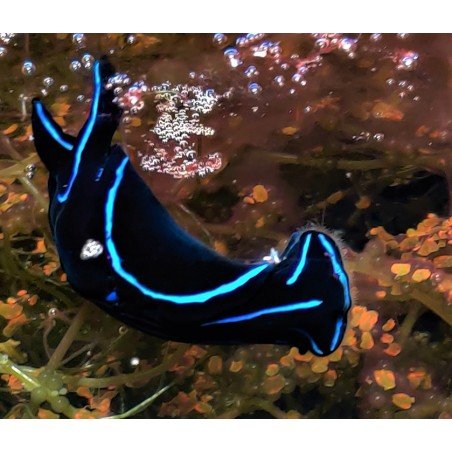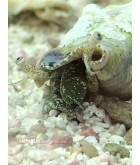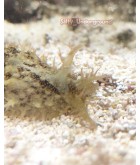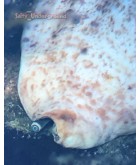Introducing the Blue Velvet Sea Slug
Ever wondered what exactly a Blue Velvet Sea Slug AKA Blue Velvet Nudibranch is? In this article, we have outlined a few things about the Blue Velvet Sea Slug to help clarify some commonly asked questions.

Jump to
Description of the Blue Velvet Sea Slug
Blue Velvet Sea Slugs are black in color with neon blue stripes around the outside of their bodies and down the middle of their heads. Their heads are hammer-shaped which gives them the nickname Head Shield Sea Slug. Velvets can grow up to three inches long including their two tail-shaped appendages at the rear which mimics the body shape of red flatworms – their only food source. Red flatworms, or red planaria, are also poisonous and secrete a toxic chemical when they die. Blue Velvets absorb this chemical when they eat the flatworms and become poisonous in turn. Velvets use a suctioning proboscis to suck up individual flatworms like a little black vacuum cleaner. These sea slugs are very delicate and so care must be taken with powerheads and overflow areas, as they could easily get sucked into a sump or refugium in a home aquarium. When they do die, they should be removed from the tank immediately to prevent the spread of toxins. Dead Velvets lose their striking blue stripes and become a murky brown.
Native Habitat of the Blue Velvet Sea Slug
Blue Velvets can be found in the wild throughout the tropical Indo-West Pacific area including the Red Sea. They are often spotted on the reefs or in the sandy and silty areas to a depth of 98 feet. They can also be found under decaying wood and vegetation. Velvets prefer warmer water (72 – 78F) with standard salinity (1.023 – 1.025). They are very sensitive to water changes, high nitrate levels, and any chemicals or medications including copper.
Care and Feeding for the Blue Velvet Sea Slug
As previously mentioned, as specialized predators, Blue Velvets only prey on red planaria flatworms. They can be a fast and effective method for removing an infestation of flatworms but unfortunately, once the flatworm population has been eradicated, the velvet will die of starvation unless additional flatworms are introduced. The recorded standard aquarium lifespan for a Velvet is around 3 months. They will regularly lay eggs in mucus-wrapped spirals attached to the sand, however, there has been little to no success in raising offspring past the larval stage.
Special Notes
- Velvets should be drip acclimated
- A large amount of flatworms is required to adequately feed a single slug. They eat quickly and hunt by following the chemical trails produced by the flatworms.
- After feeding, it will surround itself with a mucus cocoon “sleeping bag” to rest.
- While the Blue Velvet is quite peaceful, other tank inhabitants like Cleaner Wrasse may attack them.
- Despite often being called Blue Velvet Nudibranchs, they are not actually nudibranchs. Blue velvets belong to the Cephalaspidea (Bubble Shell) order while nudibranchs are part of the Nudibranchia order. They do both fall into the Sea Slug (Opisthobranch) group.
Emily Strunk July 13th, 2022
References
Eliot, N. E. (1903). Notes on some new or little known members of the family Doridiidae. Proceedings of the Malacological Society of London. 5: 331-336. Available online at https://www.biodiversitylibrary.org/page/15168692
Live Aquaria. (n.d.). Blue velvet nudibranch: Saltwater invertebrates for Marine Reef Aquariums. Live Aquaria: Quality Aquatic Life Direct To Your Door. Retrieved July 8, 2022, from https://www.liveaquaria.com/product/2198/?pcatid=2198
Rudman, W.B. (1998, September 8). Chelidonura varians Eliot, 1903. [In] Sea Slug Forum. Australian Museum, Sydney. Available from http://www.seaslugforum.net/find/chelvar
Velvet sea slug - Chelidonura varians - Blue Doris. FreshMarine.com - Velvet Sea Slug - Chelidonura varians - Buy Cheap Blue Doris at Wholesale. (n.d.). Retrieved July 8, 2022, from https://www.freshmarine.com/velvet-sea-slug.html
WARREN Lindsay, COROLLA Jean-Pierre, SITTLER Alain-Pierre. (2021, January 8). Chelidonura varians Eliot, 1903. Available from https://doris.ffessm.fr/ref/specie/472




